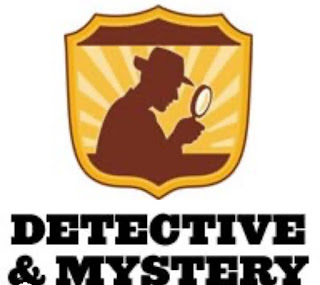Genre Research Blog - Mystery
CAMS: In mystery films, various camera angles are used to create suspense and engage the audience. Low-angle shots can intensify the characters. High-angle shots create a sense of vulnerability. Dutch angles, where the camera is tilted, can add uniqueness. Close-ups are used to express emotions and tension. Wide shots help to set the scene, and tracking shots can build anticipation. Combining these angles create the overall mysterious atmosphere.
CLAMPS: Lighting plays a big role in creating a mysterious atmosphere in films. Low lighting like shadows is often used to show details and enhance suspense. Adding dramatic contrast between light and dark areas. It’s also used to highlight the silhouettes characters, adding a feeling of secrecy. Dim and moody lighting contributes to the overall environment, These techniques work together to build an atmospheric and suspenseful tone in mystery movies. Props are carefully chosen to contribute to the plot and atmosphere. Common popular props include magnifying glasses, detective tools, old photographs, mysterious letters, and relevant items related to the storyline. Everyday objects can become important clues to the story and their placement adds complexity to the mystery.Costumes in mystery films are designed to reflect characters' personalities, roles, and the overall period or setting. Detectives may wear classic trench coats and fedoras, emphasizing a timeless and sophisticated look. Characters involved in the mystery may have distinctive attire to distinguish them, while small details in clothing can hint at hidden details. Disguises and unexpected costume changes can add intrigue and mislead the audience. Costume choices are intentional, aiming to enhance character depth and contribute to the suspenseful tone of the mystery genre.
Common editing: Editing in mystery films is a big part of maintaining suspense and controlling the flow of the movie. Jump cuts or flashbacks can provide essential context or reveal hidden details. Montages may convey the detective's thought process or the unraveling of clues. Pan or tilts are also used as transitions from character to characters. As well as fade in and fade out.
Common sound: Diegetic sounds in mystery films include footsteps, doors creaking, phone rings. Ambient sounds consists of sounds like rain/thunder storms to add a spooky effect. These sounds are key to the story, serving to engage the audience in the film's environment and often playing a role in building suspense. Sound motif are also used to signify certain events or characters. Dialogue delivery is often deliberate, with characters speaking in hushed tones or using cryptic language. Additionally the use of silence can also be powerful, allowing the audience to focus on subtle sounds, heightening the mystery.
Examples of mystery films: Se7en, Gone Girl, Knives Out, Clue, The Girl on the Train.
Elements I like: I like the use of different costumes to give impressions and clues to the audience. I also like the use of high and low angles to hint different power between actors in the storyline.
Elements I dislike: I would avoid using jump cuts in order to portray the full story to the audience without any confusion due to the complex nature of mystery genre.


Comments
Post a Comment